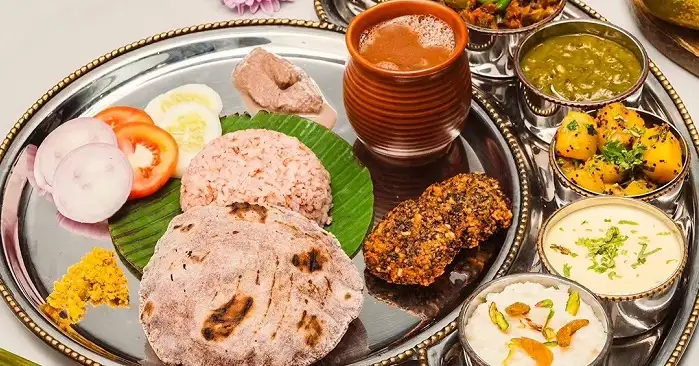Travelling to Uttarakhand? Planning to try local food? Here are a few suggestions about what to eat in Uttarakhand!
Uttarakhand’s cuisine is special for its simple, nutritious, and healthy preparation using local ingredients. Its key features include the regional flavors of Garhwali and Kumaoni cooking, which often use seasonal produce, local herbs, and staples like buckwheat and finger millet. Popular dishes include nutrient-rich gravies like Kafuli (from leafy greens) and Chainsoo (from roasted black gram), and flatbreads like Mandua ki Roti (finger millet).
Uttarakhand cuisine is dominated by lentils, leafy greens, and grains, particularly buckwheat and barley, reflecting the region’s agrarian lifestyle. Key features include hearty dishes prepared from local ingredients, such as leafy greens like spinach and fenugreek (as in Kafuli), various lentils, and flours like wheat and barley. The cuisine is divided into the distinct styles of the Garhwal and Kumaon regions, with regional specialties like Garhwali dishes such as Chainsoo and Faanu, and Kumaoni dishes like Ras and Bhaang ki Chutney.
What to eat in Uttarakhand?
Kafuli
Kafuli is a traditional and nutritious thick green curry from the Indian state of Uttarakhand, primarily made from leafy greens like spinach and fenugreek. It is a staple dish known for its earthy flavor, simple preparation, and high iron content, and is often served with steamed rice.
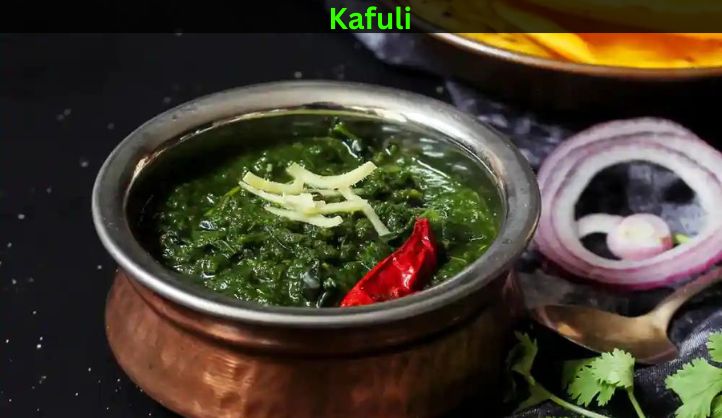
The main ingredients are spinach (palak) and fenugreek (methi) leaves. Other common ingredients include rice flour for thickening, garlic, ginger, green chilies, and spices like cumin and asafoetida. The greens are typically blanched and pureed, then cooked with a sauté of spices. Rice flour paste is added to give it a thick gravy consistency. It is commonly cooked in an iron wok (kadhai) which can add to the iron content. Kafuli has a rich, earthy flavor. This smooth, thick, and aromatic curry is traditionally served hot with steamed rice or sometimes with flatbreads like chapati or mandua roti.
Aloo ke Gutke
Aloo ke Gutke is a traditional, simple potato dish from the Uttarakhand, particularly popular in Kumaoni and Garhwali cuisines. The name translates to “potato pieces,” and the dish involves stir-frying boiled and cubed potatoes with basic spices like mustard oil, cumin seeds, and turmeric. It is a vegan, gluten-free, and easy-to-make dish that can be served as a snack, a side dish with rice and dal, or packed in a lunchbox.
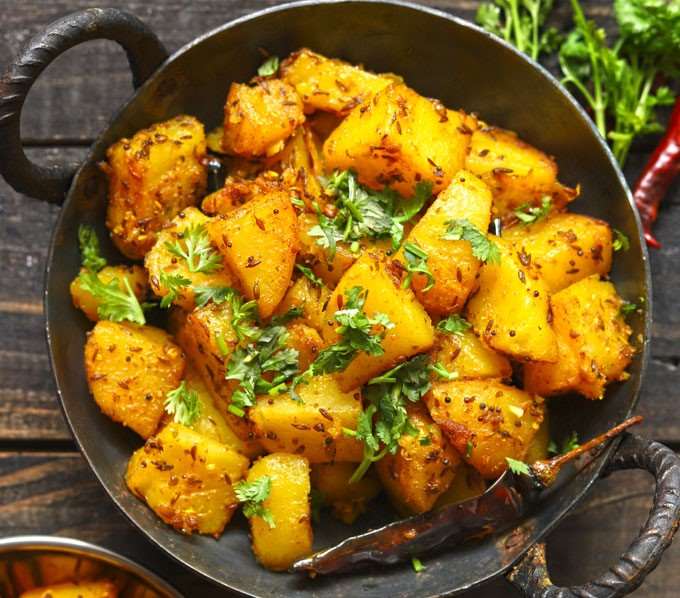
Boiled and cubed potatoes are stir-fried in oil with a blend of spices such as cumin seeds, mustard seeds, coriander powder, turmeric, and red chili powder. The Kumaoni version often features a distinct flavor from wild mustard seeds called jakhiya. The Garhwali version may use jakhya, a local spice with a nutty flavor, instead of cumin seeds. It can be served hot with rice, roti, or chapati, and is also a popular street food or snack enjoyed with evening tea.
Bhang ki chutney
Bhang ki chutney is hemp seed chutney, a popular condiment from Uttarakhand. It is made from roasted hemp seeds, which provide a nutty flavor and crunchy texture, and is seasoned with herbs like mint and coriander, spices, and lemon juice. It’s important to note that the seeds have no psychoactive effects, unlike the leaves or resin of the cannabis plant.
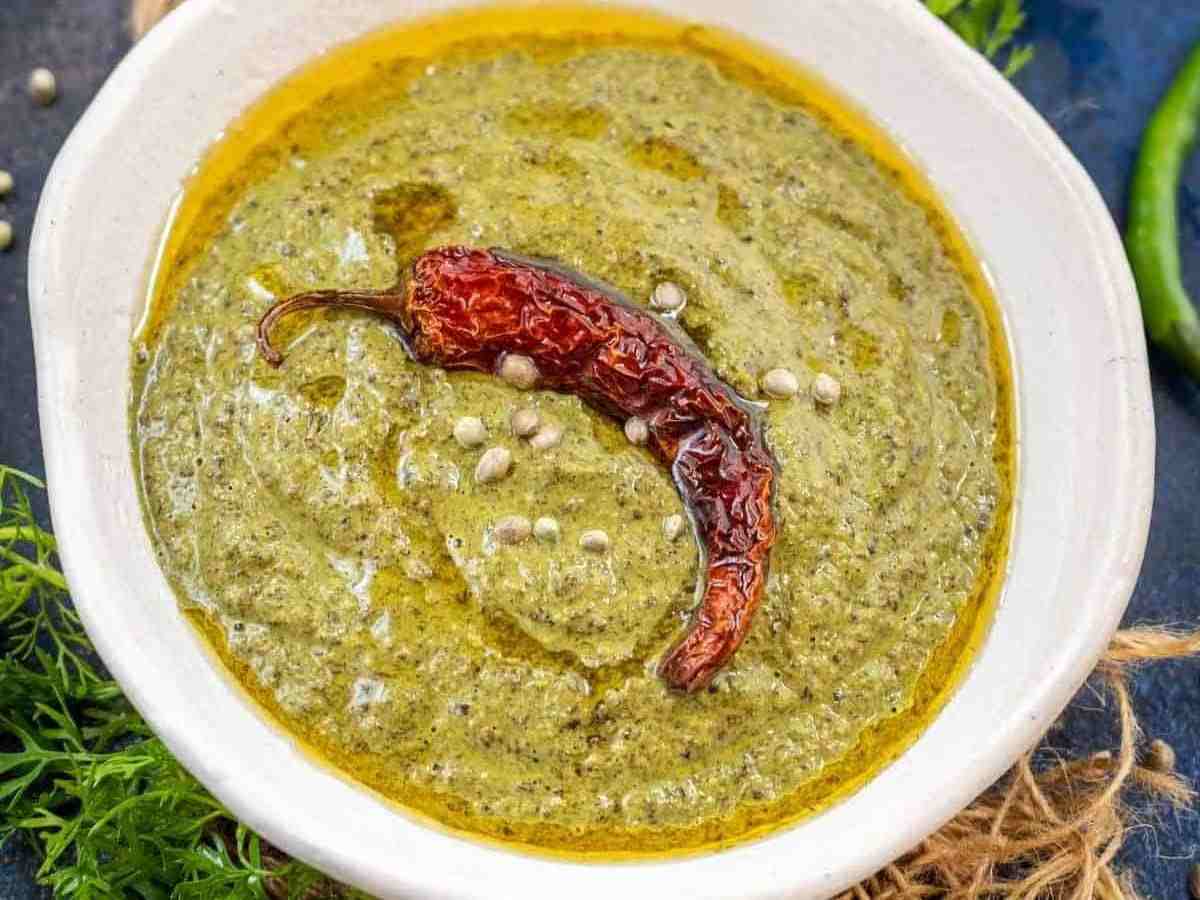
The primary ingredient is the hemp seed, known as “bhang ke beej” in Hindi. It has a distinct nutty flavor and a slightly crunchy texture from the roasted seeds. Common additions include green chilies, coriander, mint, and lemon juice. Hemp seeds are a good source of protein, fiber, and healthy fats, and are considered a superfood by some. The seeds used in this chutney are non-intoxicating and do not cause a “high”.
Chainsoo
Chainsoo is a traditional, high-protein dish from the Uttarakhand region of India, made from roasted and ground black gram (urad dal). It is a hearty lentil curry with an earthy flavor, often prepared in an iron pot with various spices like cumin, coriander, and black pepper, and is a staple, especially during the winter months.

The main ingredient is black gram (urad dal), which is roasted and then ground into a coarse powder. It is cooked with spices, and sometimes a whole wheat flour is added to thicken the texture. The roasted dal powder is cooked with a tempering of spices fried in oil, typically mustard oil. It’s then simmered with water and other aromatics until it becomes a thick, flavorful curry.
Chainsoo has a rich, earthy, and nutty flavor. The spices add warmth and depth, making it particularly popular in the cold climate of Uttarakhand. The dish is often served hot with steamed rice or roti. It is considered a very nutritious dish due to its high protein content from the black gram.
Phanu
Phanu is a traditional lentil dish from the Garhwal and Kumaon regions of Uttarakhand, India, made from soaked and ground lentils like gahat (horse gram), arhar, or green moong. It is prepared as a thick, creamy soup, or can be formed into fritters (tikkis) to be fried, and is typically served with rice. The dish is known for its nutritional value and unique flavor from fresh ingredients like garlic, ginger, and chilies.

It has a unique and hearty flavor profile from the slow cooking and the addition of fresh ingredients like garlic, ginger, and green chilies. Traditionally served with rice, it can also be enjoyed with roti.
Dabuk
In Uttarakhand, Dubuk (also known as Dubke or Bhatt ke Dubke) is a traditional, popular, and nutritious lentil dish from the Kumaon region. It is a hearty, thick porridge or a soupy curry, especially popular during the chilly winter months. Dubuk holds a special place in the local culture and is often prepared for festivals, weddings, and other significant occasions, symbolizing community, warmth, and the nourishing nature of Uttarakhand’s traditional cuisine.

It is primarily made from local lentils or pulses such as Bhatt (black soybeans), Gahat (horse gram), Arhar, or Moong dal. The lentils are typically soaked overnight and then ground into a coarse paste before cooking. The dish is traditionally prepared in an iron pot (kadhai or jaam), which is believed to enhance the taste and add essential iron content to the food. It is cooked slowly on a low flame, often with minimal spices, such as cumin, asafoetida (hing), ginger, and sometimes local herbs like jambu.
Dubuk has a smooth, creamy, and easily digestible consistency, and is a comfort food typically served hot with steamed rice and sometimes a side of bhang ki chutney or Kumaoni raita.
Jhangore ki Kheer
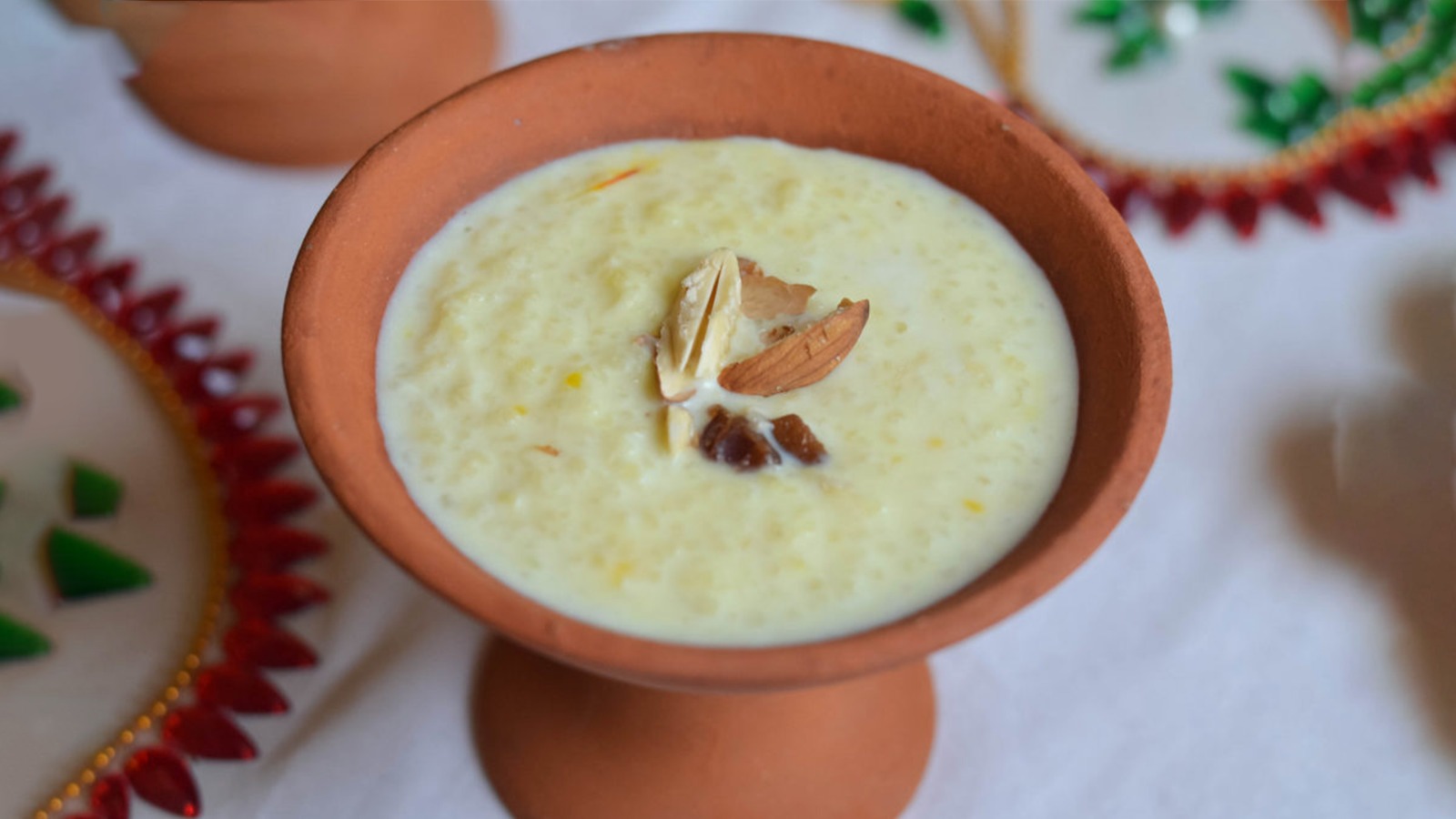
Popular for its guaranteed presence in special occasions, like festivals and birthdays, Jhangore ki Kheer is deeply connected to affective memories from women and men born and raised in Uttarakhand’s regions. Made with a local type of rice called Jhangore (or Barnyard Millet in English), this recipe also takes naturally sweet raisins, crunchy nuts, milk and sugar. Part of an ancient cooking tradition, the dessert is deep connected to the roots of India, to Ayurveda and basic literature.
Bal Mithai
Bal mithai is a popular sweet from Uttarakhand, India, made from roasted khoya (dried milk solids) that is fudgy and chocolate-like in appearance, and coated with small white sugar balls. It is especially famous in the Almora district and is a unique and traditional part of the Kumaon region’s cuisine.
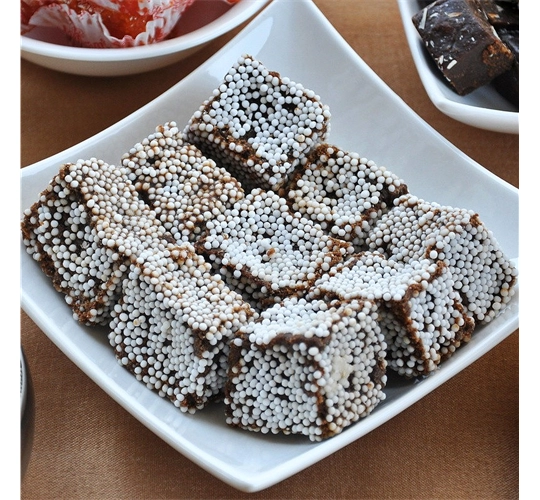
The main ingredients are roasted khoya and sugar balls. The khoya is roasted until it turns a chocolatey brown, then formed into pieces and coated with the white sugar balls. It originated in the Kumaon region and is often associated with Almora. Bal mithai is a popular and sought-after sweet and is considered a symbol of Uttarakhand’s rich cultural heritage.

